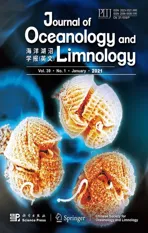Petrogenesis of volcanic rocks from Eastern Manus Basin: indications in mineralogy and geochemistry*
2021-02-22XiaZHAOLiyanTIANJianhuiSUNPengHUANGYanLIYueGAO
Xia ZHAO , Liyan TIAN Jianhui SUN Peng HUANG , Yan LI , Yue GAO
1 CAS Key Laboratory for Experimental Study under Deep-sea Extreme Conditions, Institute of Deep-sea Science and Engineering, Chinese Academy of Sciences, Sanya 572000, China
2 Key Laboratory of Marine Geology and Environment, Institute of Oceanology, Chinese Academy of Sciences, Qingdao 266071, China
3 University of Chinese Academy of Sciences, Beijing 100049, China
4 Center for Ocean Mega-Science, Chinese Academy of Sciences, Qingdao 266071, China
5 Laboratory for Marine Geology, Qingdao National Laboratory for Marine Science and Technology, Qingdao 266061, China
Abstract To understand the petrogenesis and magma evolution history in the Eastern Manus Basin (EMB), geochemistry of pyroxene and plagioclase mineral phenocrysts in basaltic andesites and dacites were reported. The plagioclase-melt thermometry showed that, plagioclase in dacites crystalized in 1 027.2-1 028.5 °C under 3.37-5.08 kbar, whereas in basaltic andesite was 1 181.4-1 187.0 °C under 1.79-4.46 kbar. Pyroxene compositions and invariable La/Sm vs La values of whole rock powders indicate that lavas were erupted in rapid cooling rate and mainly controlled by fractional crystallization (FC). In addition, oscillatory zonings in plagioclase and pyroxene phenocrysts indicated small local perturbations and degassing episodes in the magma chamber. Some high Mg# clinopyroxene antecrysts were found in EMB lavas. The highest Mg# of parental EMB melts is 69, which falls into the range of initial partial melts from upper mantle peridotite source (68-75). In terms of isotopic compositions, the EMB lavas most likely originated from Indian-type MORB mantle which was influenced by subduction components. In details, the subduction components are mainly derived from the dehydration of a subducted altered oceanic crust, and the contribution of sediment influence is minor. The Pb isotopic compositions and end member modeling further suggest that the source of subduction components is more likely from the Pacific Plate instead of the Solomon Plate.
Keyword: Eastern Manus Basin; plagioclase; pyroxene; whole rock; Sr-Nd-Pb isotope; magma
1 INTRODUCTION
Magmatism in back-arc basins has long been the highlight for studying tectonic and magmatic processes in subduction zones. Back-arc basin basalt (BABB) is compositionally different from mid-ocean ridge basalt (MORB) although both are produced in similar basic process in an extensional environment. In details, the back-arc spreading center is geographically close to active volcanic arc and trench, and therefore the magmatism is inevitably affected by subduction processes. The Eastern Manus Basin (EMB) is situated in the triple-junction of the Pacific Plate, Bismarck Plate, and Solomon Plate (Martinez and Taylor, 1996). It has vast young volcanic activities and can provide a natural laboratory to explore the formation and evolution of back-arc basin. Since the active plate motions produced many hydrothermal vents, most studies focus on the submarine hydrothermal fluids (Scott and Binns, 1993; Gamo et al., 1997; Fourre et al., 2006; Craddock et al., 2010; Reeves et al., 2011), and only few studies are about the magmatism in the back-arc basin setting. Kamenetsky et al. (2001) measured the trace element and isotopic compositions of EMB lavas, which were used to illustrate fractional crystallization (FC)’s dominating on magma evolution. The FC dominating process was further verified by Ma et al. (2017). Sinton et al. (2003) thought that crustal contamination possibly played an important role on the formation of erupted lavas in EMB based on the enrichment in Na and Zr with more radiogenic87Sr/86Sr values. According to the fluid phase in the melt inclusions, Yang and Scott (2002) found the EMB magma is saturated with volatiles in the magma chamber. Beier et al. (2010) and Park et al. (2010) proposed that substantial amounts of subduction components are presented in the mantle source of EMB, which may include the subducted sediment melts and the fluids released from the altered oceanic crust. Woodhead et al. (1998), Sinton et al. (2003), and Beier et al. (2010) studied the origin of subducted components using petrological and geochemical data, and found that they may come from the Solomon Plate. However, Park et al. (2010) studied the Sr-Nd-Pb isotopes and trace elements data of EMB lavas, and revealed that the subduction components came from the early subduction of the Pacific Plate. In summary, it is still on debate about the nature of subduction components and their influences on the EMB back-arc mantle.
The compositions of minerals forming in magma system could be useful for exploring the magma evolution (Lai et al., 2016). While most mineralogical studies in EMB mainly concentrated at the hydrothermal alteration processes. For example, Moss et al. (2001) studied the gold content in EMB rocks; Lackschewitz et al. (2004) described the chloritization, illitization, and bleaching of EMB lavas; Zeng et al. (2012) studied the Fe-Si-Mn oxyhydroxides in EMB magma. Only Ma et al. (2017) mentioned that the oscillatory zoning of plagioclase phenocrysts could reflect the magma mixing mechanism in EMB magma. It is necessary to have more mineralogy data for better understanding the magmatic system in the EMB.
In this paper, we present newly measured whole rock geochemical data (major and trace elements, and Sr-Nd-Pb isotopes) of volcanic rocks erupted on the EMB, and chemical compositions (major and trace elements) of pyroxene and plagioclase mineral phenocrysts. It will allow us to explore the magmatic processes (temperature and pressure, evolution etc.), the nature of the mantle sources, and finally the petrogenesis of back-arc lavas in the EMB.
2 GEOLOGIC SETTING
Manus Basin is an extensional back-arc basin in the eastern part of the Bismarck Sea, northeast of Papua New Guinea (Kamenetsky et al., 2001). It stretches across three areas including New Britain, New Ireland, and Manus Island and spans the margins of Pacific Plate, Solomon Plate, and Bismarck Plate (Fig.1). This region has become a subduction zone for more than 40 Ma. At about the Oligocene, the southwest-dipping subduction of Pacific Plate towards Caroline Plate formed the New Ireland arc, Tabar-Lihir-Tanga-Feni (TLTF) island chain, and a part of the New Britain arc (Exon et al., 1986). At about 10 Ma ago, the Ontong Java Plateau collided with the New Ireland and North Solomon Arc (Phinney et al., 1999), making the subduction direction of Pacific Plate reversed and Solomon Sea Plate subduct northward beneath New Britain. Back-arc spreading in the Bismarck Sea started at about 3.5-4 Ma ago, when the Huon Peninsula and New Britain rotated after colliding with New Guinea (Taylor, 1979). At <3.5 Ma ago, the Extensional Transform Zone (EZT) and the Manus Spreading Centre (MSC), which are ~275 km from the New Britain Arc, started to spread (Taylor, 1979; Beier et al., 2010). Currently, the main plate motions are concentrated at three left-lateral transform faults, including Djaul Fault, Willaumez Fault, and Weitin Fault. The maximum extension rate of Manus Basin is about 92 mm/a (Martinez and Taylor, 1996).
The Eastern Manus Basin is a pull-apart zone with a series of en echelon, and is also called the Eastern Manus Rift. It locates between two major transform faults, Djault Fault to the west and Weitin Fault to the east (Lackschewitz et al., 2004) (Fig.1), and is the youngest expanding area of Manus Basin (Binns and Scott, 1993; Hrischeva et al., 2007). Rock types discovered here are extensive, including basalt, basaltic andesite, andesite, dacite, rhyodacite, and rhyolite (Yang and Scott, 2002).
3 SAMPLES’ INFORMATION AND ANALYTICAL METHOD
3.1 Samples’ information
Our studied samples came from two hydrothermal fields (PACmanus and Desmos) in the Eastern Manus Basin, which were collected by Remote Operated Vehicle (ROV) during the ‘201501’ cruise of R/V Science. The details of samples’ information are described in Appendix A.

Fig.1 Regional map of Manus Basin and sample locations
All the samples were obtained from water depth between 1 600 and 2 000 m. Dacite samples (M2, M7, and M8) were from the PACmanus hydrothermal field, and the basaltic andesite samples (M6 and M5) from the Desmos hydrothermal field (Fig.2). The whole rock geochemical compositions of sample M5 and M6 were published by Zhao et al. (2017).
3.2 Analytical method
All the rock samples were fresh. Preliminary treatments were carried on to avoid possible contamination of seawater and sediments. Sediments were firstly washed away from the samples by ultrasonic cleaning equipment for 15 min (Huang, 2005), and then were immersed in absolute ethyl alcohol and hydrochloric acid to remove organic material and secondary carbonate, respectively. Finally, ultrapure water was used to remove chloride ion from samples, dried in oven, and then crushed into powders of 200 mesh by clean and dry agate mortar.
Whole-rock major element contents were analyzed by conventional X-ray fluorescence (XRF) (Phillips PW 1480), in the Research Institute of Uranium Geology, China National Nuclear Corporation, Beijing. Trace element concentrations were measured by inductively coupled plasma mass spectrometry (ICP-MS) (ELAN DRC II), at the Institute of Oceanology, Chinese Academy of Sciences. The accuracy of the measurement was within 5%-10% for most trace elements based on repeated analyses of the geological reference materials BCR-2 and GSR-3. Sr-Nd-Pb isotopic compositions were obtained on a Finnigan MAT262 multicollector instrument in the Guangzhou Institute of Geochemistry, Chinese Academy of Sciences. The87Sr/86Sr ratio of the NBS 987 standard and the143Nd/144Nd ratio of the BHVO-2 standard measured in this study were 0.710 254±14 (2δm) and 0.512 989±8 (2δm), respectively. The206Pb/204Pb,207Pb/204Pb, and208Pb/204Pb ratios of the NBS 981 standard were 16.942 6±4 (2δm), 15.498 0±8 (2δm), and 36.728 4±24 (2δm), respectively, and they were all within the errors of recommended values.
Mineral chemical composition was determined by a JXA-8230 electron microprobe equipped with three wavelength dispersive spectrometers (WDS) in the Key Laboratory of Submarine Geosciences and Prospecting Techniques, Ministry of Education, Ocean University of China, Qingdao, China. The operating conditions were 15 kV accelerating voltage, probe current of 20 nA, and beam diameter of 5 μm. The precision was better than 1%. The standards used are: albite for Na, Al, and Si; diopside for Mg and Ca; sanidine for K; rutile for Ti; almandine for Fe; bustamite for Mn; and chromium oxide for Cr.
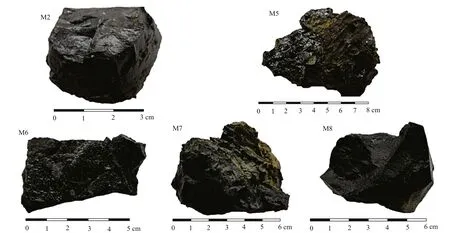
Fig.2 Photographs of discovered samples

Fig.3 Total alkalis vs silica diagram (Le Bas et al., 1986)
4 RESULT
4.1 Whole-rock geochemical compositions

Fig.4 K 2 O vs SiO 2 diagram for the EMB lavas
The samples (M2, M7, M8) were found highlyevolved for having SiO2values ranging from 66.04 wt.%-68.82 wt.%, MgO 0.75 wt.%-1.24 wt.%, TiO20.55 wt.%-0.72 wt.%, and Mg# 20-27 (Appendix B), These samples fell into the field of dacites in the total alkalis vs silica diagram (Fig.3). In comparison, M5 and M6 were basaltic andesites (Zhao et al., 2017), and all belonged to the middle-K calc-alkaline series (Fig.4). Combined with the published major element data, all the EMB lavas displayed clearly positive correlation between CaO, FeOTand MgO, and negative correlation between Na2O, K2O and MgO (Fig.5). In terms of Al2O3variation, there is a kink at MgO=value of 7 wt.%, which might demonstrate the crystallization of plagioclase and pyroxene. In terms of TiO2and P2O5,the kinks at about the MgO=values of 3 wt.%, might reflect the crystallization of ilmenite and apatite (Park et al., 2010).
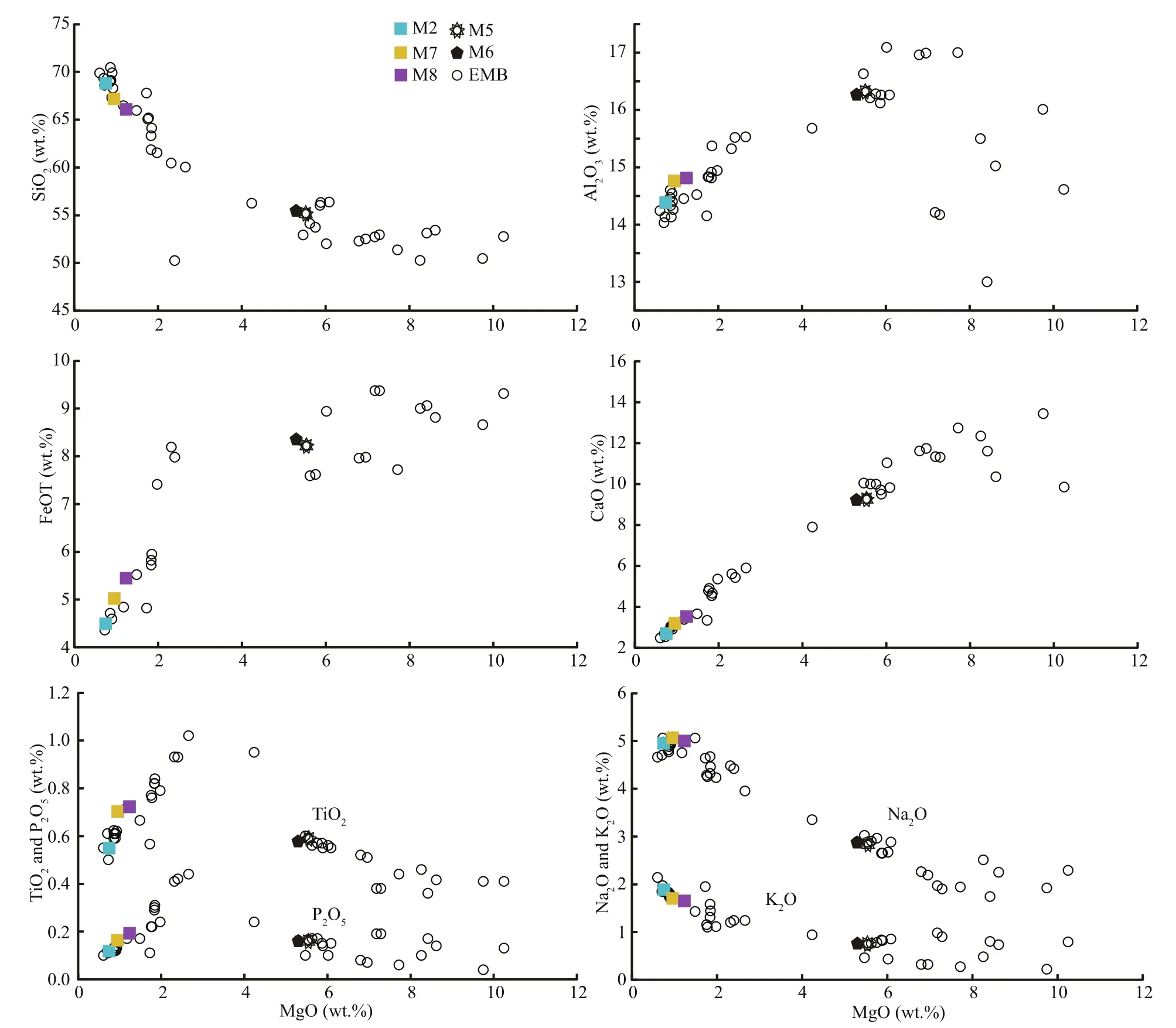
Fig.5 Major oxides vs MgO diagrams

Fig.6 N-MORB normalized REE patterns of EMB lavas (Sun and McDonough, 1989)
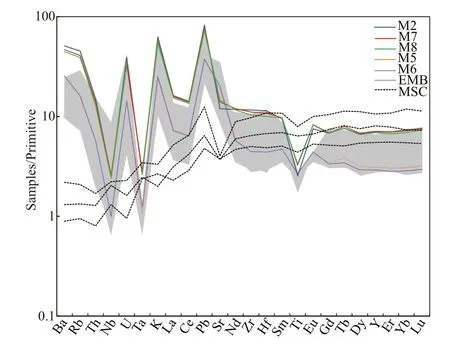
Fig.7 Spider diagram of EMB lavas normalized to the primitive mantle (Sun and McDonough, 1989)
The trace element concentrations of all dacite samples are presented in Appendix B. The total rare earth element (∑REE) contents ranged from 78.08 to 80.18×10-6. In the chondrite-normalized patterns (Fig.6), the (La/Sm)N(2.4-2.8) and (Sm/Yb)N(1.3-1.7) values of both the basaltic andesite and dacite samples displayed the enrichment in light rare earth elements (LREEs) relative to heavy rare earth elements (HREEs). No Eu negative anomaly was discovered. In the primitive mantle normalized spider diagram (Fig.7), they all presented noticeable enrichment in large ion lithophile elements (LILEs) (e.g. K, Rb, Sr, Ba, and U) and Pb, and depletion in highfield strength elements (HFSEs) (e.g. Nb, Ta, Zr, Hf, and Ti).
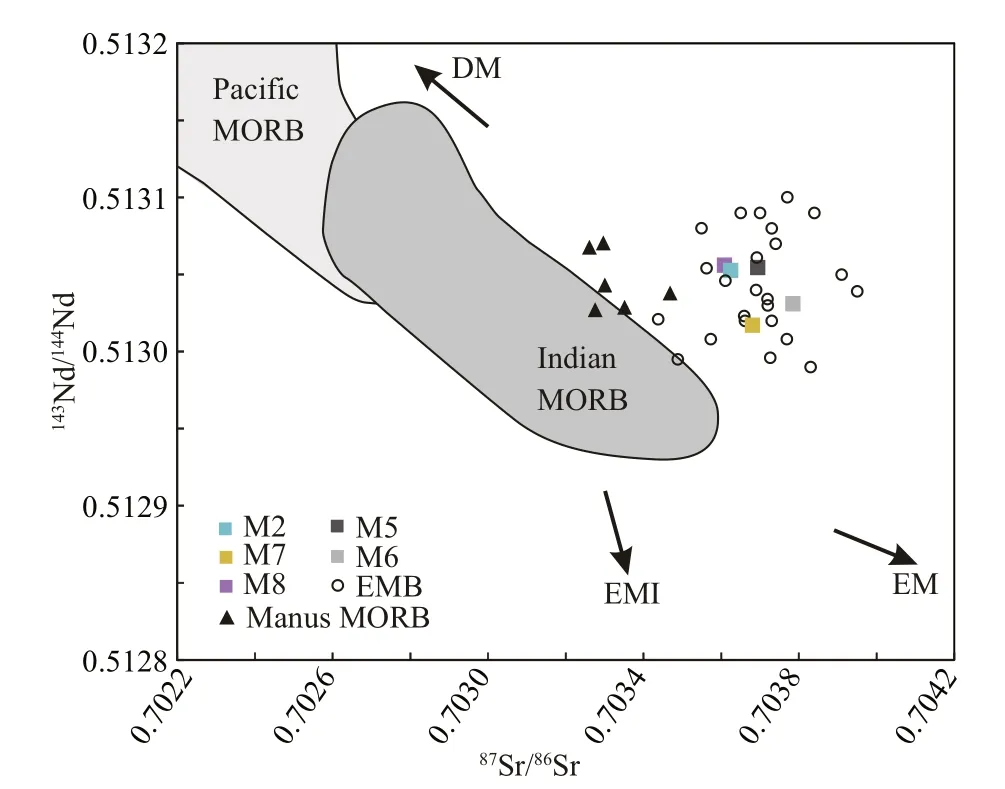
Fig.8 Plot of 143 Nd/ 144 Nd vs 87 Sr/ 86 Sr of the EMB lavas
The dacite samples, have87Sr/86Sr values ranging from 0.703 60 to 0.703 68,143Nd/144Nd 0.513 018-0.513 056 (Fig.8),206Pb/204Pb 18.76-18.78,207Pb/204Pb from 15.54-15.55, and208Pb/204Pb 38.39-38.41(Fig.9). Both the Manus MORB and EMB samples (our newly measured and published data) have similar143Nd/144Nd range, but higher87Sr/86Sr values than that of the Indian MORB. On the other hand, all the Manus MORB and EMB samples are above the NHRL in terms of Pb isotopic compositions. In addition, EMB lavas showed greater206Pb/204Pb values and similar208Pb/204Pb ratios to Manus MORB and roughly fall within the Pacific MORB field. Lavas from other back-arc basins located in the western Pacific (such as Okinawa Trough, Mariana Trough, Shikoku Basin, and Parece Vale Basin) fall into the Indian MORB field (Fig.9b).
4.2 Phenocryst mineral chemistry
Appendices C and D list the major element compositions for plagioclase and pyroxene analyzed by electron microprobe. Appendices E and F present the compositional variations of zonings in plagioclase crystals in M2 and M6, and clinopyroxene crystals in M6.
4.2.1 Plagioclase phenocrysts
All the feldspars in the matrix of studied samples were plagioclases rather than orthoclase. Plagioclase microcrystals were 0.01-1 mm in size. In addition, the An contents (An mol%=100Ca/(Ca+Na)) of plagioclases in the basaltic andesite (M5 and M6) were in the range of 60-88, including bytownite, labradorite, and andesine, and thus present a continuous evolution sequence from basic to neutral plagioclase (Fig.10). On the other hand, the An contents of the plagioclase from the dacite (M2 and M8) ranged from 29 to 52, thus were identified as andesine (Fig.10).
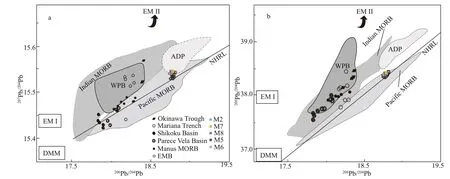
Fig.9 Plots of 207 Pb/ 204 Pb (a) and 208 Pb/ 204 Pb (b) vs 206 Pb/ 204 Pb (Yan and Shi, 2014)

Fig.10 Or-An-Ab Ternary Diagram of plagioclase (Chen et al., 2015)
The plagioclase crystal in dacite sample M2 does not show obvious zonation. From the core to point 20-8, most elements keep constant concentrations; whereas from point to 20-8 to the rim, they have clear variations, especially in terms of An and FeO contents (Fig.11a). By comparison, the plagioclase crystal in the basaltic andesite sample M6 displays oscillatory zonation from core to rim, especially in An, Al2O3, Na2O, MnO, and MgO values (Fig.11b).
4.2.2 Pyroxene phenocrysts
The basaltic andesites (M5 and M6) and dacites (M2 and M8) contained pyroxene with the En contents of 43-81 and 36-78, respectively, which could be classified into augite, pigeonite, and clinoenstatite (Fig.12).
In details, pyroxene in basaltic andesite (M5 and M6) were characterized with high Mg# values of 73-89 (Mg#=100×Mg/(Mg+Fe2+), where Mg and Fe2+representing molar proportions), high MgO and Cr2O3, and low MnO2and FeO contents. In contrast, pyroxene in dacite (M2 and M8) had relatively lower Mg# values of 51-76, lower MgO and Cr2O3, and higher MnO2and FeO contents (Fig.13). Moreover, the CaO contents could divide pyroxene into orthopyroxene (Opx) (with 1.5%-2.1% CaO (Galer and O’ions, 1989)) and clinopyroxene (Cpx) (with about 20% CaO (Huang et al., 2010)). Both basaltic andesite (M5 and M6) and dacite samples (M2 and M8) shared the two groups of pyroxenes (Fig.13). The Opx contents in pyroxene of M2, M5, M6 and M8 were about 41%, 13%, 7%, and 71%, correspondingly. Oscillatory zonings were found in clinopyroxenes; and a clinopyroxene crystal in M6 presented a clear dark core and bright rim (Fig.14a). Correspondingly, the dark core bore high Mg# values of 73-74, whereas the bright rim contained relatively low Mg# values of 66-68. The Mg# values stayed constant from the core to point 26-8 and then decrease remarkably from point 26-8 to the rim (Fig.14a). No similar pattern developed in the other elements. Another crystal in M6 displays oscillatory zonation from core to rim, especially in FeO, Cr2O3, MnO, and MgO values (Fig.14b).

Fig.11 Compositional prof iles and the backscattered electronic images of the plagioclases zoning in M2 (a) and M6 (b)

Fig.12 Wo-En-Fs Ternary diagram of pyroxene (Morimoto, 1988)

Fig.13 Major elements vs Mg# values in pyroxene from volcanic rocks in the EMB lavas
5 DISCUSSION
5.1 Crystallization temperatures and pressures

Fig.14 Compositional profiles and the backscattered electronic images of the clinopyroxenes zoning in M6
To better describe the magma chamber conditions beneath the EMB, plagioclase-melt thermobarometer was used to constrain the temperature-pressure (T-P) conditions of the plagioclase phenocryst crystallization. The composition of the melt must be in equilibrium with the crystalized plagioclase if using plagioclasemelt thermobarometer. The albite-anorthite exchange coeき cient KD(Ab-An)pl-liqwas used as a test for equilibrium (Putirka, 2008). It is known that the equilibrium of plagioclases and melts are related to temperature. When T >1 050 °C, the KD(Ab-An)pl-liqshould be 0.27±0.11 to ensure equilibrium state; when T <1 050 °C, the KD(Ab-An)pl-liqshould be 0.1±0.05 (Putirka, 2008). The whole rock compositions of the EMB lavas (Appendix B; Table 1 in Zhao et al. (2017)) were used as the liquid to equilibrate with the plagioclases in the calculation. Water content is also important for thermobarometry calculation, and here we adapted it from Sinton et al. (2003), i.e. the water contents are 0.3 wt.% at SiO2=54.31 wt.%, and 0.34 wt.% at SiO2=66.45 wt.%. Because the above two SiO2concentrations are very close to basaltic andesite (M5 and M6) and dacite (M2) studied in this paper, we also use 0.3 wt.% and 0.34 wt.% in the plagioclase-melt thermobarometry calculations.
The plagioclase-melt barometry equations 24a and 25a from Putirka (2008) were taken as follows:

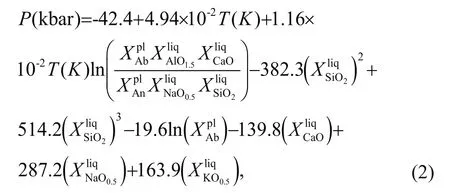
where T is the temperature (in K); P is the pressure (in kbar); a term such as Xijrefers to the mole fraction of component i in phase j.
The calculated crystallization temperature and pressure are listed in Appendix G. The standard error of estimate (SEE) for Eqs.1 & 2 are ±36 °C and ±2.47 kbar, respectively. The calculated plagioclasemelt thermometry crystallization temperatures were in narrow ranges of 1 027-1 187 °C (M2: 1 027.2-1 028.5 °C; M5: 1 183.6-1 187.0 °C; M6: 1 181.4-1 183.2 °C) (Appendix G). On the other hand, the crystallization pressures are in a relatively wide range. They spanned from 1.79 to 5.08 kbar (5.37-15.24 km correspondingly), specifically, 3.37-5.08 kbar for M2, 2.63-4.42 kbar for M5, and 1.79-4.46 kbar for M6 (Fig.15).
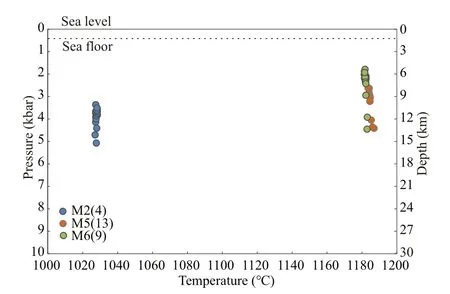
Fig.15 Plagioclase-melt equilibrium thermobarometry models (Putirka, 2008) for basaltic and silicic magmas in the EMB
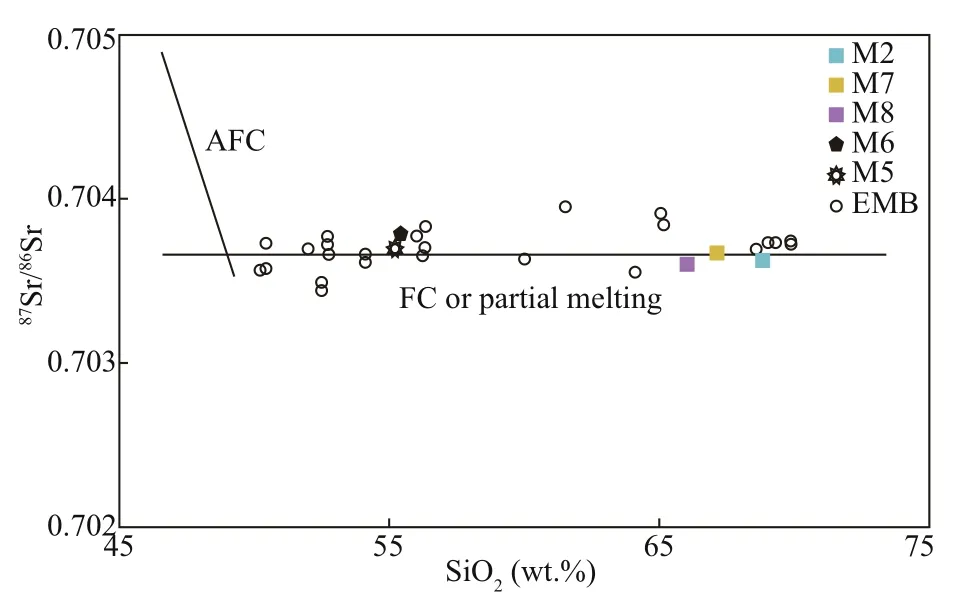
Fig.16 Plot of 87 Sr/ 86 Sr vs SiO 2 for the EMB lavas
In summary, it is not surprising that plagioclases in basaltic andesites (M5 and M6) had higher crystallization temperatures than the more evolved dacite M2. On the other hand, dacite sample M2 crystallized in a deeper magma chamber than basaltic andesite samples M5 and M6.
5.2 Magmatic evolution process
5.2.1 Indicator of bulk geochemical characteristics
Considering the confined sampling area and covariant major elements, we proposed that all the EMB lavas followed the same liquid lines of descent and therefore a simple explanation of the compositional variation is closed-system FC (Beier et al., 2015). A plot of87Sr/86Sr vs SiO2was made to test our hypothesis (Fig.16). It shows that assimilation and fractional crystallization (AFC) did not occur during the evolution of the EMB lavas. Otherwise,87Sr/86Sr would have decreased with the increasing SiO2(Park et al., 2010). Fractional crystallization or partial melting played an important role during the evolution of EMB lavas instead. The La vs La/Sm diagram (Fig.17) can be further used to distinguish the FC and partial melting process. It was clearly showed that with the increasing La, the La/Sm values stayed constant, which implies the evolution of EMB lavas was mainly controlled by FC but partial melting. The continuous sequence from bytownite to andesine in plagioclase crystals also indicated the FC process.
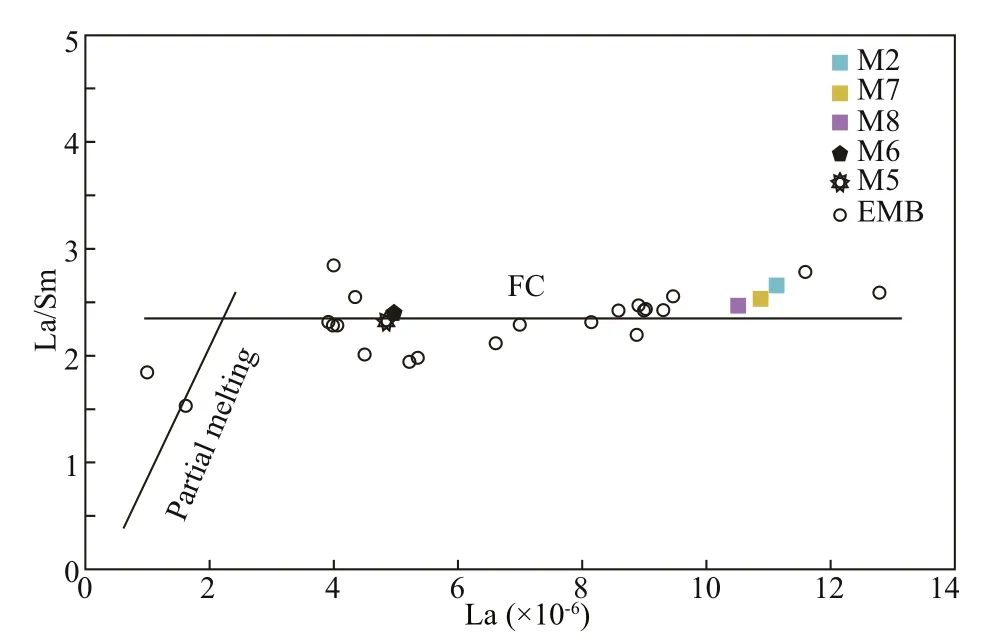
Fig.17 La-La/Sm diagram for EMB lavas
As mentioned in Zhai (1986), if pyroxene crystalizes in low crystallization temperature and slow cooling rate, there will be a relatively wide immiscible gap between poor-calcium pyroxene and rich-calcium pyroxene. If pyroxene crystalizes in high crystallization temperature and rapid cooling rate, the immiscible gap will be smaller, even with geochemical components of the metastable pyroxene facie passing through the immiscible gap. Several pyroxenes in our samples are pigeonite in the metastable pyroxene facie (Fig.12), indicating that the EMB lavas were formed in high crystallization temperature and rapid cooling rate.
5.2.2 Indicator of plagioclase and clinopyroxene zoning structure
Different plagioclase morphologies and compositions could indicate complicated growth histories. The Fe concentration, An value, and textural variations in plagioclase can be used to explore the compositional variations (i.e. P, T, melt H2O content), mixing and recharge of magmas (Ginibre et al., 2002; Ginibre and Wörner, 2007; Smith et al., 2009). On the other hand, microscopic characteristics of pyroxene composition and structure can provide important genetic and diagenetic information (Zhao et al., 2011). The variations of FeO, Na2O, Al2O3, TiO2, Mg#, MgO, and Cr2O3concentration in pyroxene can indicate the relevant factors such as temperature and pressure, composition of fluid phase, magma composition and melt cooling rate (Zhao et al., 2011).

Fig.18 Mg# values of Cpx vs Mg# values in the host wholerock compositions from EMB
Figure 11 describes various patterns of An zonation in plagioclase phenocrysts in basaltic andesite (M6) and dacite (M2). Plagioclase in M6 showed relatively large variations in An content (up to a maximum of 16%) and clear zonation (Fig.11b); instead, the one in M2 displayed small variations in An content (<6%) (Fig.11a). As small variations in plagioclase compositions may be caused by changes in lithostatic pressures (about 1% An/kbar; Housh and Luhr, 1991), it is unlikely that the An zonation occurring in our plagioclase crystals (with >1% An) was solely due to the effects of decompression (Guo et al., 2018). Another possible factor might be the mixing between geochemically different magma batches, which could also change the An and Fe, Mg, Ba, and Sr contents accordingly (Firouzkouhi et al., 2016). Since the FeO and MgO variations of plagioclase crystal were not as remarkable as changes in An contents, their fluctuations were not consistent with the oscillatory zoning of An (Fig.11). It implies that the zoning structure was unlikely due to magma mixing. Minor fluctuations in the compositions of plagioclase are usually ascribed to small, local perturbations of the magma chamber, e.g., when crystals are related to small-scale convective movements (Shcherbakov et al., 2010). Zonation with slightly high An contents may form when the crystals move from a hotter region of the magma to cooler regions. In that case, they would crystallize into zones with lower An contents (Barca and Trua, 2012). Zonation with slightly high An contents may also form when the crystals form in degassing episodes and consequent fluctuations of water contents of the magma chamber occur (Firouzkouhi et al., 2016). Here we proposed that small and local perturbations and degassing episodes took place in EMB magma chamber.
There are only few reports about oscillatory zoning in pyroxene phenocrysts (e.g., Barton et al. 1982; Shimizu, 1990; Simonetti et al., 1996; Cioni et al., 1998; Reubi et al., 2003; Elardo and Shearer, 2014). The oscillatory zonings of pyroxene developing in M6 are consistent with those of plagioclase (Fig.14), which could be also attributed to small, local perturbations, and degassing episodes in the magma chamber.
5.2.3 Cpx-melt equilibrium
If Cpx is in equilibrium with its host, the Cpx can be called as autocrysts and would have been crystallized from the latest stage of magmas, which could be represented by matrix (e.g., Davidson et al., 2007; Chen et al., 2018). If in disequilibrium, the Cpx would be either xenocrysts genetically irrelevant to the matrix or antecrysts crystallized from the early batch of magmas (e.g., Davidson et al., 2007; Chen et al., 2018).
Previous studies show that the partition coeき cient of Fe-Mg [KD(Fe-Mg)cpx-melt]=(MgliqFecpx) / (MgcpxFeliq), where Mgliqand Feliqrepresenting mole or cation fractions in the liquid, Mgcpxand Fecpxrepresenting mole or cation fractions in the clinopyroxene can test the equilibrium between Cpx and melt. If the calculated coeき cient is equal to 0.275±0.067 (Putirka et al., 2003), the Cpx is in equilibrium with melt.
However, it is diき cult to test the equilibrium for the studied dacite (M2 and M8) and basaltic andesite (M5 and M6), which are lack of a representative matrix (glass) component (Figs.11, 14 & 18). Moreover, as discussed earlier, the EMB rocks might be formed in a rapid disequilibrium crystallization process, and therefore the glass could not always represent the compositions of the melt. As an alternative, the melt composition could be selected from the whole-rock compositions (Appendix B; Table 1 in Zhao et al. (2017)), which have the characteristic of less mineral crystallization (e.g., Neave and Putirka, 2017).
As shown in Fig.18, according to KD(Fe-Mg)cpx-melt, the Mg# values of Cpxs in equilibrium with melts in the dacite (M2 and M8) and basaltic andesite (M5 and M6) were estimated as 52-63, 48-60, 72-81, and 75-83, correspondingly. In each sample, some of Cpxs appeared to be in equilibrium with their host whole rocks, and the others in disequilibrium, suggesting that the Cpxs include both autocrysts and xenocrysts or antecrysts.
5.2.4 Estimates of parental liquid compositions of the high Mg# clinopyroxene
As discussed above, some high Mg# (up to 89) (Fig.18) clinopyroxenes were found in M2, M5, and M6, which are in disequilibrium with their host whole-rock compositions. The high Mg# values were alike to those of Cpxs from mantle xenoliths. However, they do not represent xenocrysts from mantle peridotites because of their low Al3+and Na+contents (Fig.19). Another proof is from the petrography evidence in the BSE images (Fig.20), and the high Mg# clinopyroxenes in M5 showed complete boundaries with no dissolved borders. It also demonstrates they are magmatic clinopyroxenes rather than mantle xenoliths, since cool xenoliths would develop dissolved borders when entering heated magma. Therefore, the high Mg# clinopyroxenes were antecrysts crystallized at the early stage of magmatic system.


Fig.19 Mg# vs Al (apfu) (a) and Na (apfu) (b) in the clinopyroxene macrocrysts
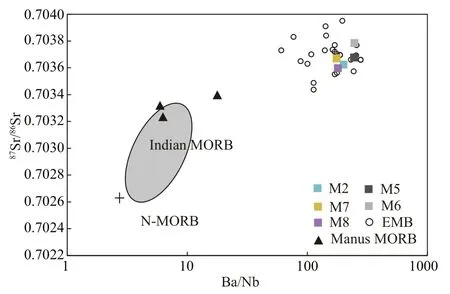
Fig.21 87 Sr/ 86 Sr vs Ba/Nb plot for EMB lavas
5.3 Implication for the petrogenesis of volcanic rocks
5.3.1 The signature of local mantle sources
Since the EMB magma experienced FC during the upwelling process solely, the isotopic values of the studied samples could be used to trace the mantle source. In the87Sr/86Sr vs143Nd/144Nd isotope diagram (Fig.8), the Manus MORB and EMB lavas, in general, are more similar to those of the Indian MORB rather than Pacific MORB. The EMB BABBs whereas have higher87Sr/86Sr values at similar143Nd/144Nd ratios compared to Indian and Manus MORB.
Rehkämper and Hofmann (1997) proposed the isotope and trace element composition of Indian MORB mantle source is distinct from that of Atlantic and Pacific MORB mantle source. Indian MORB has higher Ba and Pb, and lower Nb values than Atlantic and Pacific MORB. They thus have different Ba/Nb and Pb/Ce ratios versus87Sr/86Sr (Tian et al., 2008 and references therein). Manus MORBs overlap with the Indian MORB field in the Ba/Nb against87Sr/86Sr plot (Fig.21), and the EMB lavas trend toward higher87Sr/86Sr values with increasing Ba/Nb ratios.
Compared with lavas from other back-arc basins in the West Pacific Plate (Fig.9), EMB lavas have higher206Pb/204Pb ratios roughly falling into the Pacific MORB field, whereas samples from the Okinawa Trough, Mariana Trough, Shikoku Basin and Parece Vela Basin fall within the Indian MORB field (Fig.9b). It may imply that EMB magmas were heavily influenced by the subducting Pacific plate, which could cover the mantle source signature. The Solomon Plate basalts have indistinguishable isotopic values from the Pacific MORB (Woodhead et al. 1998). As the Pacific and Solomon Plate are the two plates subducting into EMB, it is diき cult to distinguish which plate materials are mainly contributed to the composition of EMB lavas.
5.3.2 Influence from subduction components
Pearce and Stern (2006) mentioned that different geochemical characteristics of BABBs could reflect the mantle source signatures influenced by the addition of subducted materials. As discussed above, Manus MORB could be assumed as the local mantle source, and used to indicate the influence of subducted components by comparing the geochemical characteristic of Manus MORB and EMB lavas. The trace element concentration patterns (Fig.6) show LILEs>LREEs>HFSEs characteristic of EMB lavas, while MSC (or Manus MORB) show flat pattern. It is attributed to the alternative addition by fluid and/or melt from the subducting slab (Tian et al., 2008). It is also shown in Fig.22 that EMB lavas have higher Rb, Ba, Sr, and K (“fluid-mobile” elements) contents and lower Nb (“less-mobile” element) contents at given La abundance than Manus MORB, which indicates the influence by subduction components.
The subducted components might be transported as aqueous fluid or as melt. Ba/Th and Th/Nb ratios can be used to differentiate the two types of transposition mechanisms. It is because highly incompatible elements Ba, Th, Nb have similar coeき cient during partial melting and fractional crystallization, but different behaviors in subduction zones. Ba is very mobile in fluids, Th is immobile in fluid, but mobile in mantle melts and sediments, and Nb is almost immobile in both situations (Keppler, 1996; Hermann, 2002). Thus, the high Th/Nb ratios could explain the influence of partial melt of subducted sediments, while high Ba/Th ratios indicate the addition of aqueous fluid from altered oceanic crust or sediments. Figure 23a shows that EMB lavas have both high Ba/Th and Th/Nb values, which are away from Manus MORB and trend to both subduction components.
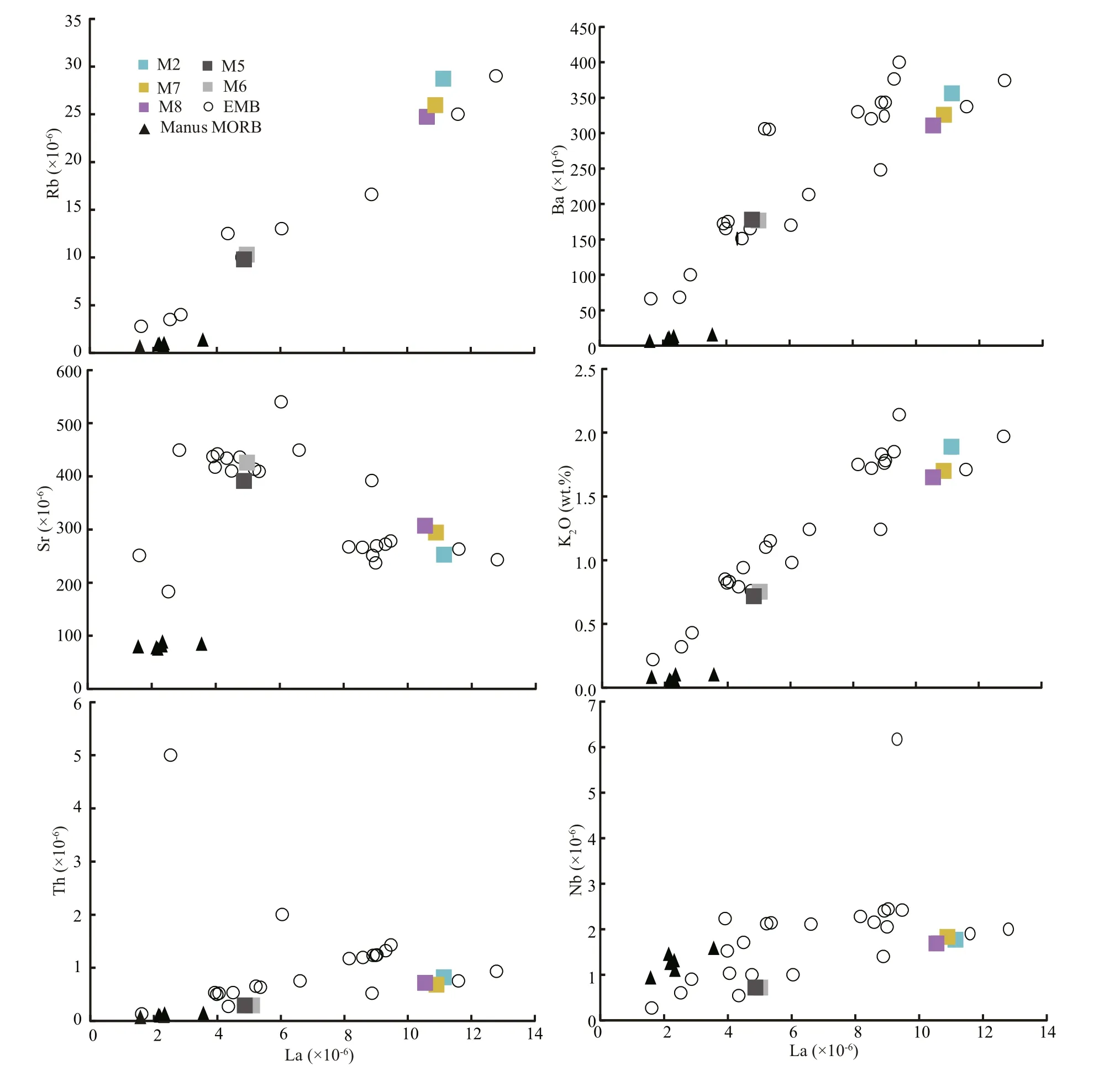
Fig.22 Plots of incompatible trace elements vs La for the EMB lavas
To further understand the nature of subduction components, we can use Th/Nd versus143Nd/144Nd ratios to indicate whether there is a sediment influence on EMB lavas (Class et al., 2000; Leat et al., 2004). Previous studies reported that the New Britain Arc and TLTF lavas were influenced by subducted sediments (e.g., Woodhead et al., 1998). Here the EMB lavas overlap well with the New Britain field (Fig.23b), and have higher Th/Nb and lower143Nd/144Nd ratios than Manus MORB. However, in terms of143Nd/144Nd ratios, even the EMB lavas with the lowest values are far above the sediment field, which implies the sediment influence was minor.
On the other hand, Fig.23c shows that EMB lavas have variable but much higher Ba/Th ratios than Manus MORB, which indicate they were heavily affected by aqueous fluid. Since sediment has much higher87Sr/86Sr ratio than Pacific or Solomon altered oceanic crust, the slightly higher87Sr/86Sr ratios of EMB lavas than Manus MORB prove that the aqueous fluids were mainly from altered oceanic crust instead of dewatering of the subducted sediment.
In summary, both aqueous fluids and subducted sediment melts made contributions to EMB lavas. The subduction components were mainly from the dehydration of subducted altered oceanic crust, and the sediment influence on the local mantle source was minor.
5.3.3 The source of the subduction components in EMB lavas
There are many debates on the nature of subdcution components. For example, Woodhead et al. (1998), Sinton et al. (2003), and Beier et al. (2010) found that the EMB samples share many similarities to those in Gn and F zones (from Woodhead et al. (1998)’s division of the Wadati-Benioff zone in New Britain), so proposed that they were influenced by subducting materials of the Solomon Plate. Park et al. (2010) found that EMB lavas were influenced by the Pacific Plate rather than the Solomon Plate because the87Sr/86Sr and Ba/La continuously changed along the subducting direction of the Pacific Plate. They denied the mixing of Solomon components because the geochemical characteristics (e.g.87Sr/86Sr and Ba/La) of EMR lavas are different from Solomon components.
Here we used Pb isotopic ratios to calculate the addition of subducted components. As shown in Fig.24a, if assuming the subducted components are from the Pacific Plate, the relative contributions from sediment and altered basalt would be in the proportions 13.5:86.5. If assuming the subducted components are from the Solomon Plate, the samples would be out of the calculated field (Fig.24b). Therefore, we suggested that the subducted components were from Pacific Plate.
6 CONCLUSION
Based on the newly measured whole rock geochemical data of dacites from the EMB, and chemical compositions of pyroxene and plagioclase mineral phenocrysts in both basaltic andesites and dacites, we have the following conclusions:
(1) Plagioclase-melt thermometry shows that the plagioclase probably crystalized in 1 027.2-1 028.5 °C, 3.37-5.08 kbar for the dacite, and 1 181.4-1 187.0 °C, 1.79-4.46 kbar for the basaltic andesite, respectively.
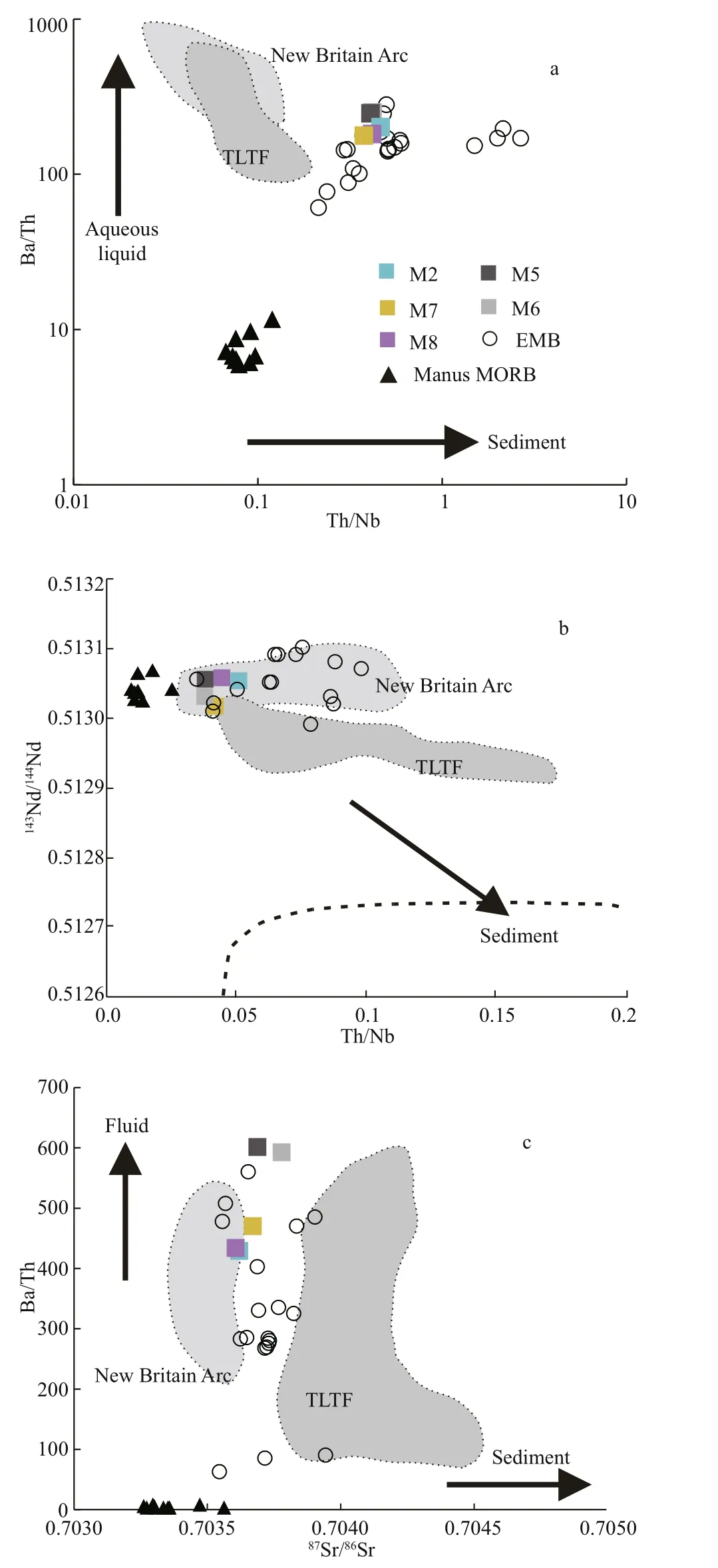
Fig.23 Ba/Th vs Th/Nb diagram (a), 143Nd/144Nd vs Th/Nd diagram (b), and Ba/Th vs 87Sr/86Sr diagram (c)
(2) FC played an important role during the evolution of the EMB lavas. Pyroxenes are mainly pigeonite in the metastable pyroxene facie, indicating EMB lavas formed in high crystallization temperature and rapid cooling rate. Moreover, oscillatory zonings in plagioclase and pyroxene phenocrysts indicate small, local perturbations, and degassing episodes in the magma chamber.
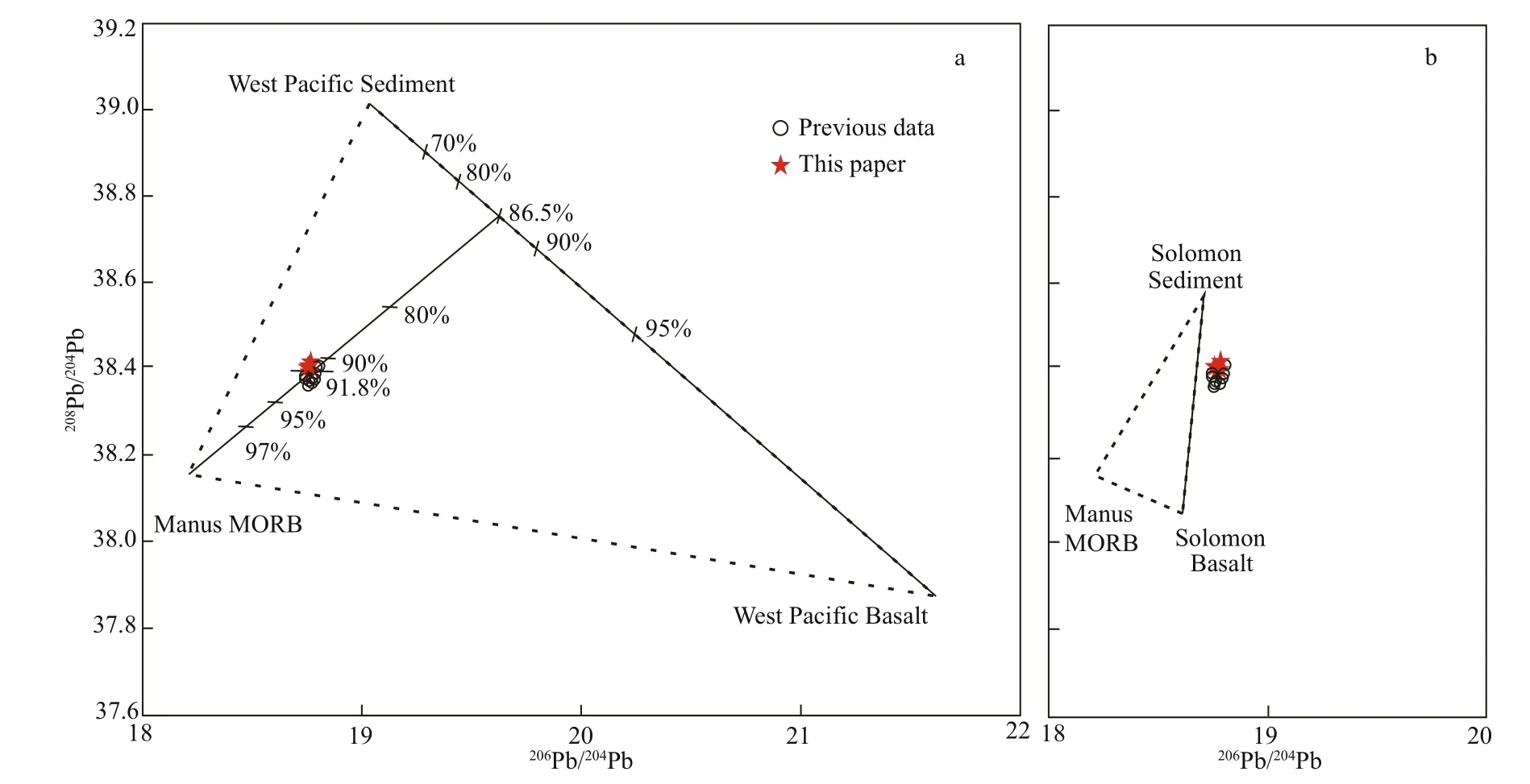
Fig.24 Plots of 208Pb/204Pb vs 206Pb/204Pb for EMB lavas
(3) The low Al3+and Na+contents and complete borders of high Mg# clinopyroxenes indicate the clinopyroxene crystals are antecrysts. The calculated highest Mg# of parental melts of EMB lavas was 69, demonstrating that the melts were initial partial melts from upper mantle peridotite source. (4) Combined Sr-Nd isotope compositions and fluid mobile/immobile trace elements indicate that the EMB lavas are more akin to Indian MORB, but could be influenced mainly by dehydration of subducted oceanic crust. The contribution of sediment is minor. (5) The Pb isotopic compositions and end member modelling further suggest that the subduction components were more likely from the Pacific Plate, instead of the Solomon Plate.
7 DATA AVAILABILITY STATEMENT
The authors declare that the data supporting the findings of this study are available within the article and its electronic supplementary files. And the data in this study are also available from the authors upon reasonable request.
8 ACKNOWLEDGMENT
We appreciate LAI Zhiqing from the Key Laboratory of Submarine Geosciences and Prospecting Techniques, Ministry of Education, Ocean University of China, Qingdao, China for his efforts on our experiments. We also thank LIU Mu from the Research Institute of Uranium Geology, China National Nuclear Corporation, Beijing; YIN Xuebo from the Institute of Oceanology, Chinese Academy of Sciences; and LIANG Xinrong from the Guangzhou Institute of Geochemistry, Chinese Academy of Sciences, for their help in XRF, ICP-MS, and MC-ICP-MS analyses. Meanwhile, we express our gratitude to the crews of the R/V Science during the Cruise 201501 for their efforts on obtaining samples. In addition, we appreciate the anonymous reviewers and Dr. CHEN for their careful work and thoughtful suggestions that have helped improve this paper substantially.
杂志排行
Journal of Oceanology and Limnology的其它文章
- Influence of sequential tropical cyclones on phytoplankton blooms in the northwestern South China Sea*
- Simulated perturbation in the sea-to-air flux of dimethylsulfide and the impact on polar climate
- Performance of ecological restoration in an impaired coral reef in the Wuzhizhou Island, Sanya, China*
- Investigating factors driving phytoplankton growth and grazing loss rates in waters around Peninsular Malaysia
- Effects of oxytetracycline dihydrate and sulfamethoxazole on Microcystis aeruginosa and Chlamydomonas microsphaera*
- Reproductive cycle of Ophiopholis mirabilis (Echinodermata: Ophiuroidea) in Zhangzi Island area, northern Yellow Sea*
